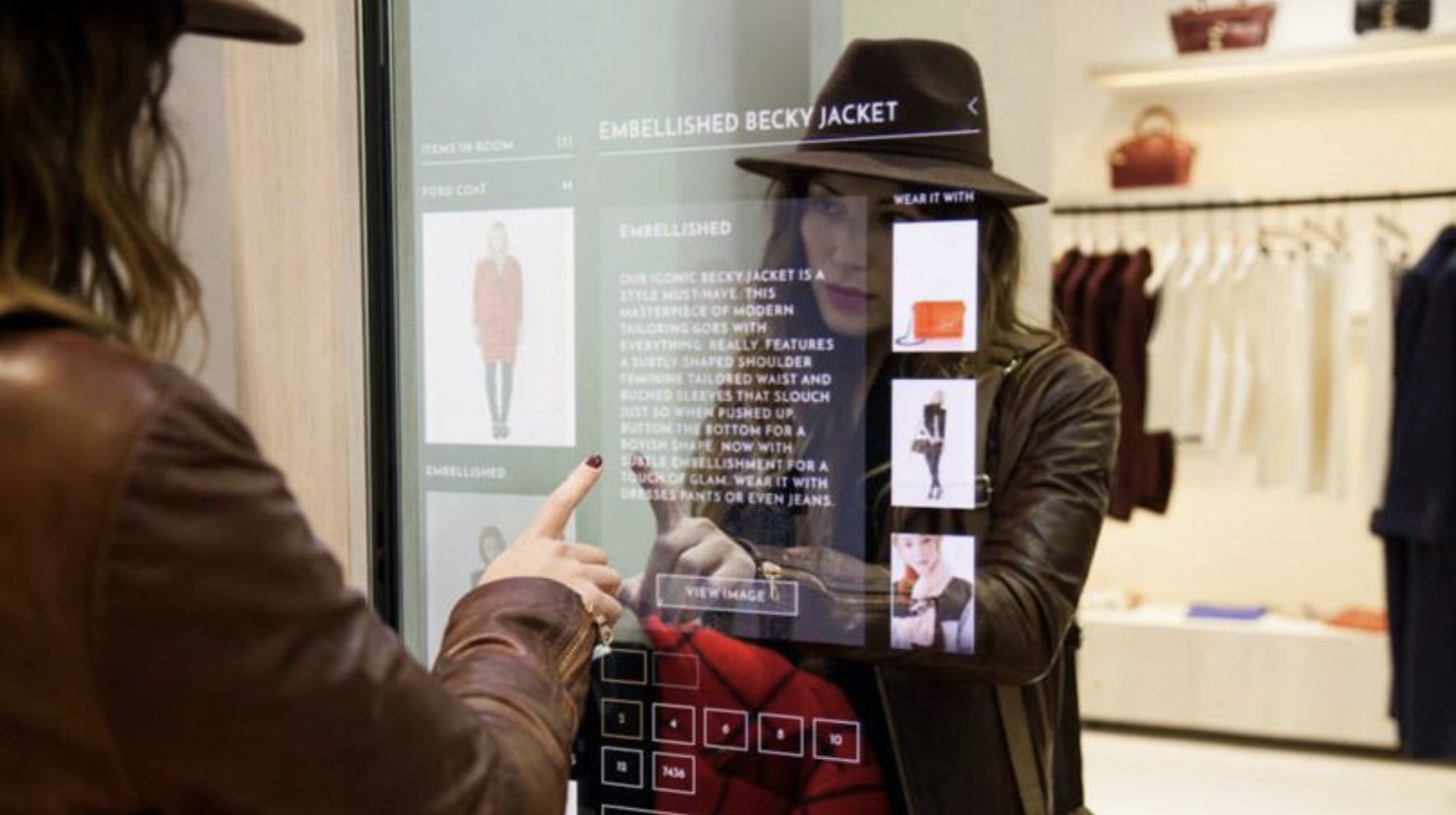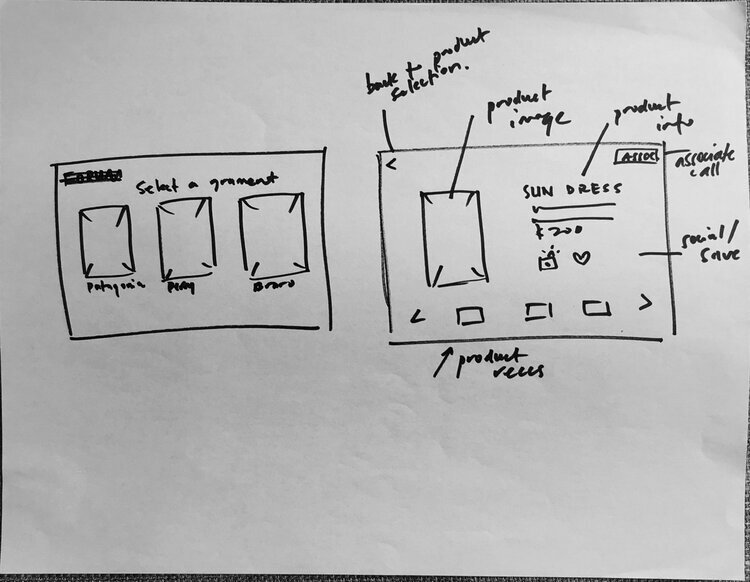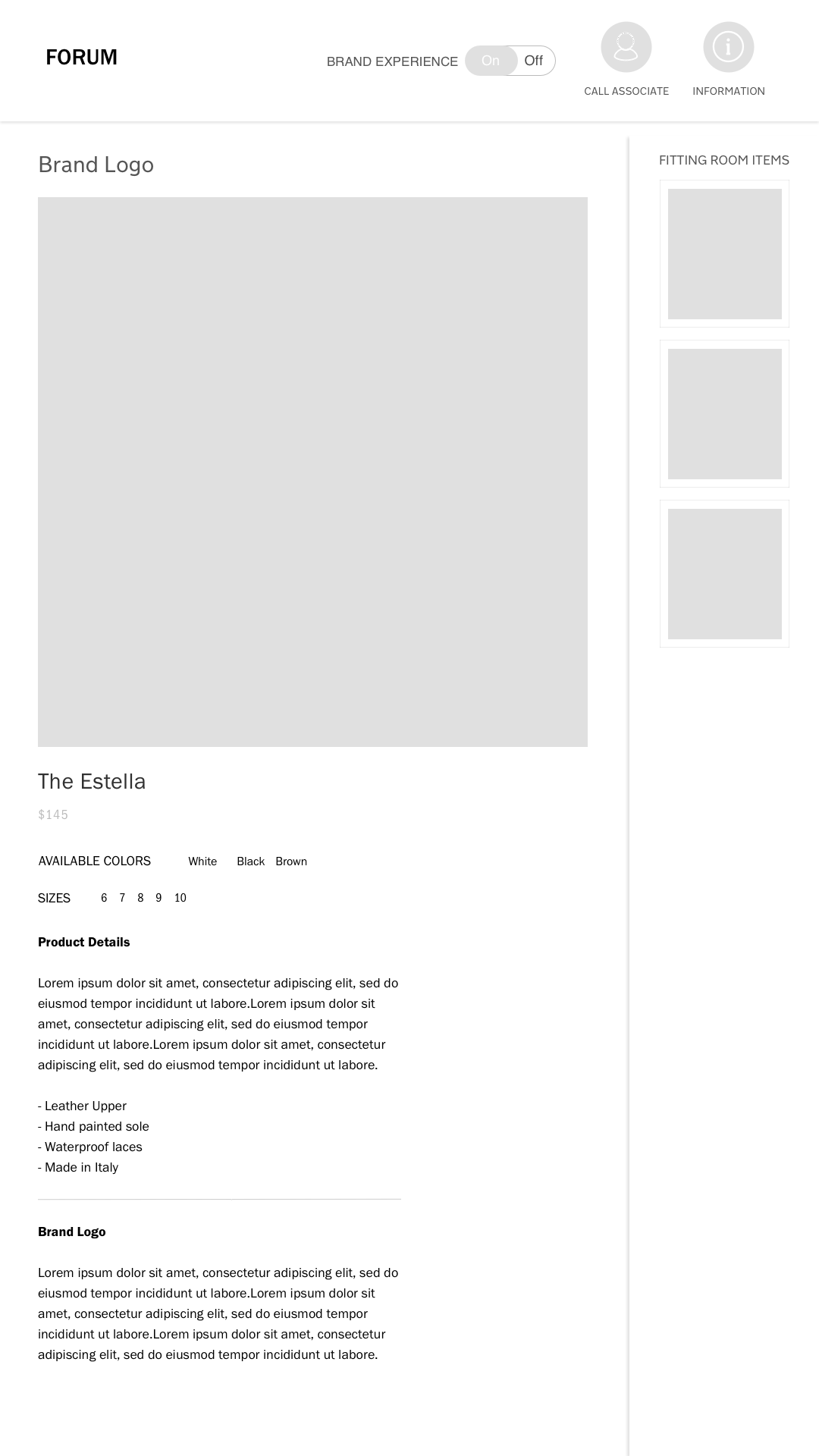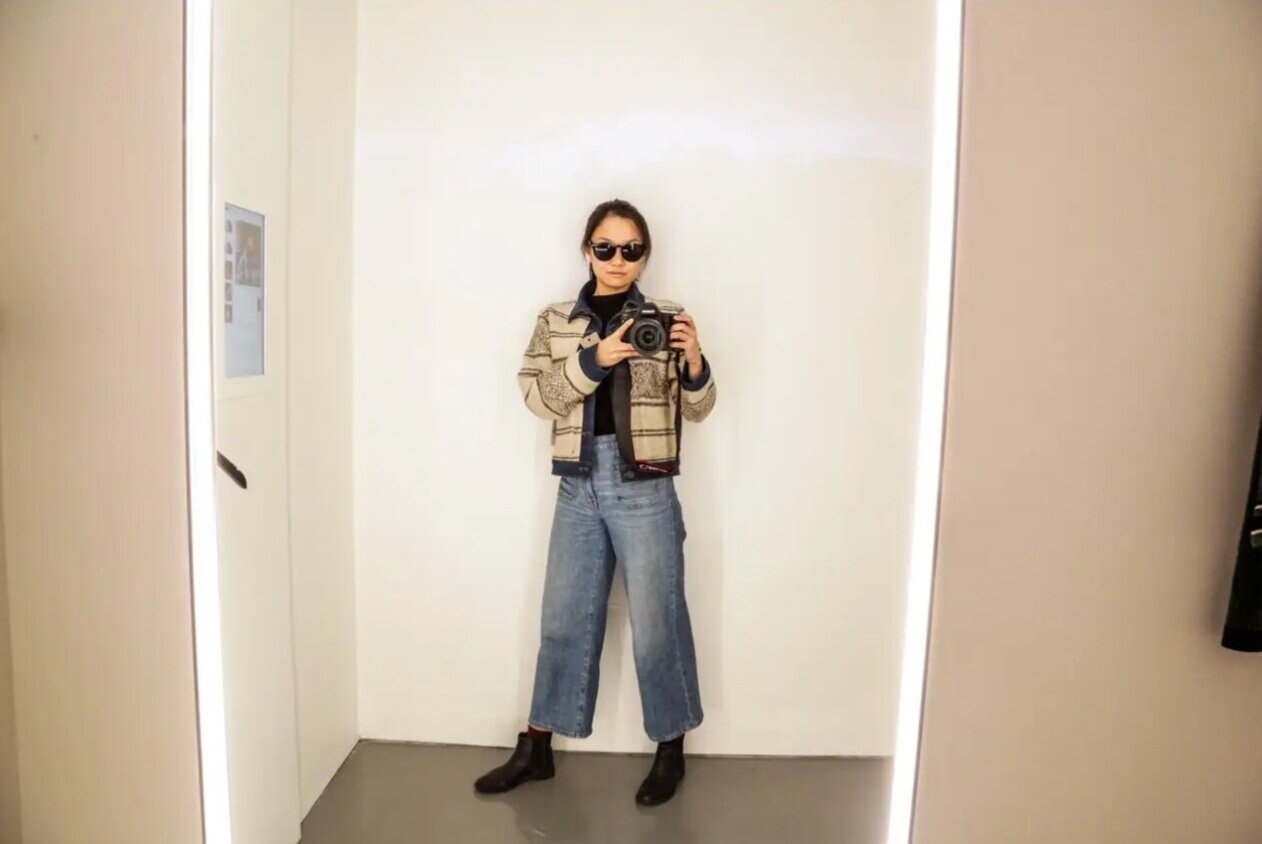
Adaptive Fitting Room
Forum, b8ta’s new fashion concept, brought retail into the future via its retail-as-a-service model. One of the key pieces of modernization for the Forum concept was an interactive fitting room powered by RFID technology that changed atmosphere based on the clothes brought in by the customer.
My Role
Primary Product Designer on a cross-functional team with members representing Product, Research and Engineering.
Outcomes
Successfully launched MVP on time, live in store
Average 21 items tried on per day
How do you go from 0 to 1 with an exec’s sketch as the guide?
Early concept sketch presented to us by the executive team.
Adaptive Fitting Room installed
MVP Goals
1. Improve overall customer experience in the dressing room.
2. Create greater connection between brand and customer.
3. Provide enhanced data and analytics to brand partners.
With limited resources I conducted desktop research and went out into the field to see real life examples of interactive dressing rooms
The ‘interactive dressing room’ concept has been developing for the last 5 years.
Three primary types:
Interactive Mirror
In Dressing Room Digital Display
AR/VR experience
The key examples of brands working to adapt to this changing landscape are Rebecca Minkoff and Reformation. Each have an interactive dressing room concept - though each takes a slightly different twist on it with differing levels of engagement and use of technology.
67%
Avg. conversion rate of customers who buy an item after visiting the dressing room
7x
Shoppers who use fitting rooms are almost 7 times more likely to buy products compared to those who simply browse the sales floor.
3x
Shoppers who receive service in the fitting room are 3 times as likely to buy products from that store.
Features
Based on the research, we went in the direction of in dressing room digital display and defined the feature set. Three screens: Splash, Home/Product Grid, Product Detail page.
1. Product Information (name, description price)
2. Brand Story
3. Call an Associate button
4. Background projection (on and off toggle)
5. Information Modal
and its important to note what we didn’t do:
Customized lighting
Customized music
KPI’s
KPIs and generating data for our brand partners
Number of Adaptive Fitting Room sessions
Product units per session (tracked via RFID)
Percentage of transactions which result from a session (conversion)
Slack data tracking — ‘articles of clothing tried on’
Data for Brand Partners
Visualized in Marketplace platform dashboard
Bringing the build to life in our offices with the Engineering team
The digital and physical aspect of the dressing room meant close collaboration between the engineering and design teams. Our Engineering Fellow spearheaded the building of a physical prototype of the dressing room.
We built the dressing room to test out both the projection and RFID tags.
Dressing room built with mirror and projector ready to go.
Me testing out the dressing room with the projected image on the back wall making a nice backdrop for my selfie.
RFID test tag ready to go!
I sketched out some early ideas based on our existing in-store displays
Reusing what we had already built appeared to be an efficient solution due to the timeline of the project. The thinking was that we could reuse multiple components (e.g cards, menu, button design), but also tweak as needed.
The snag was our existing displays were landscape and there was some discussion that this wouldn’t be right for a dressing room. Just to be sure though, I made one portrait based sketch (which turns out would come in useful as the project progressed).
Challenge
Do we use existing patterns to lighten engineering and design lift or go in a new direction that will align with the Forum concept better?
Solution
Go in a new direction that will align with the Forum brand principles.
Second round of sketching
More wireframes…!
High fidelity designs
I worked on high fidelity wireframes and then handed them off to our brand designer to ensure that the everything was on brand - particularly the logo usage, button styles, and typography.
My final product selection screen
Product selection polished by brand designer
My final product detail screen
Product detail polished by brand designer
Prototype and handoff to engineering
We added everything to Invision to test all the possible flows and make any final tweaks - this prototype was shared with Engineering and our Stores team. We then handed the designs off to the Engineering team via Zeplin.
Testing during installation brings a new insight: the need for a ‘Reset’ button
As well as testing in our dressing room in the office we also spent time during the installation making sure everything worked.
During installation we ran into a challenge. When you walked into the room and your items appeared they would stay there for approximately 5-10 minutes after you left the room, and if more items were brought in they would just add to the current selection. Therefore, we needed a way to quickly reset the room between customers.
The solution? A reset button that store associates could quickly tap to bring the room back to the Splash screen and ready for the next customer.
Product goes live in Los Angeles
Reflection & Outcomes
Delivered MVP on time for launch
Successfully lead project as primary designer
This was an incredible opportunity to collaborate and work closely with Engineering. It was also a lesson in understanding how to create an MVP in a very short time frame and figure out which features were the most important for this first iteration.
Designing a digital experience that is completely integrated with a physical one was challenging given that the components to keep in mind were not only digital, but also hardware and architectural. It was extremely rewarding to see it come to fruition. There are areas we already know can be improved for the second iteration and we look forward to gathering feedback as the dressing room is live.
21
Average number of items tried on per day






























